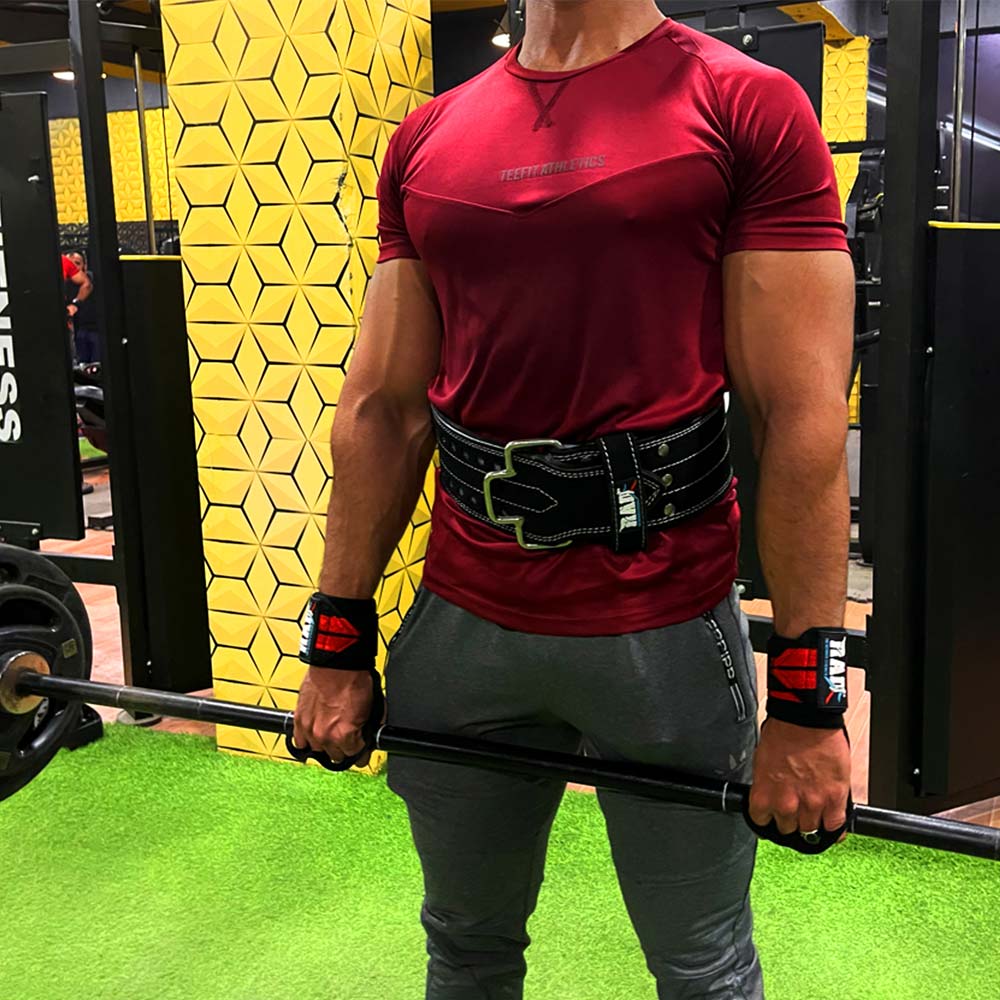
Lifting Belt: Enhancing Your Strength and Safety
Share
When it comes to strength training and Weight Lifting, ensuring Maximum performance and safety is very Important. One item that has gained popularity in fitness Word is the lifting belt.
What is a Lifting Belt?
A Lifting Belt is a supportive gear designed to be worn around the waist while engaging in weightlifting or strength training exercises. It provides and increase stability and support to the lower back and core muscles, allowing the lifters to Create more force during heavy lifts with safety.
Benefits of Using a Lifting Belt
Increased The Intra-Abdominal Pressure
Wearing a Lifting Belt helps increase intra-abdominal pressure, which acts as a natural Weight Lifting Belt for your spine. By increasing pressure within the abdominal cavity, the belt provides a rigid support system stabilizing the spine and preventing excessive stress on the lower back.
Enhanced Stability and Support
It reinforces the core muscles and the lower back, offering improved stability and support during intense lifts. It Helps the lifters to maintain proper form, reducing the risk of injuries and promoting better overall performance.
Reduced Risk of Injury
By providing additional support to the lower back, a Weight lifting belt can help prevent injuries such as herniated discs, muscle strains, and other spinal-related issues. It is a valuable tool in minimizing the risk of injury during heavy lifts and demanding workouts.
Types of Lifting Belts
Leather Lifting Belts
Leather Lifting Belts are a popular choice among powerlifters and bodybuilders due to their durability and superior support. They provide excellent stability to the spine and are designed to withstand heavy loads.
Nylon Lifting Belts
Nylon lifting belts are lightweight and flexible, making them suitable for a wide range of exercises. They offer good support while allowing freedom of movement, making them a preferred option for functional fitness and cross-training enthusiasts.
Velcro Lifting Belts
Velcro lifting belts are easy to adjust and fasten, providing a snug fit for lifters. They are generally made from durable nylon materials and are suitable for various types of lifting exercises.
Powerlifting Belts
Powerlifting belts are wider and more rigid, offering maximum support for heavy lifts. They are typically made of high-quality leather or reinforced materials, providing excellent stability for powerlifters pushing their limits.
Weightlifting Belts
Weightlifting belts are slightly narrower compared to powerlifting belts, allowing for greater mobility while still providing ample support. They are commonly used in Olympic weightlifting and other dynamic lifting movements.
How to Choose the Right Lifting Belt
Size and FitSelecting the correct size and fit is important for the effectiveness of a WeightliftingBbelt. It should fit snugly around the waist, providing support without restricting movement.
Material and DurabilityConsider the material used in the Lifting Belt. Leather belts are known for their durability, while nylon belts offer flexibility and lighter weight.
Width and Thickness
A wider belt provides Better support, especially for powerlifting exercises. However, for exercises requiring greater mobility, a narrower belt may be preferred.

Closure Mechanism
Different Lifting Belts feature various closure mechanisms like buckles, Velcro straps, or lever. Choose the one that is most secure and convenient for your needs.
Proper Usage and Techniques
Correct PlacementTo ensure the Belt provides Maximum support, it should be positioned tightly around the waist, just above the hip bones. This placement allows for maximum stability and generate pressure.
Adjusting and FasteningOnce the belt is in place, tighten it firmly to maintain a secure fit throughout your lifting session. Ensure it is not too tight to restrict breathing or too loose to compromise support.
Breathing TechniquesProper breathing techniques are essential when using a Weight Lifting Belt. Take a deep breath into your diaphragm before each lift, and hold it throughout the exertion phase. This technique helps create a more stable core and enhances the effectiveness of the lifting belt.
Suitable Exercises for Lifting Belt UseLifting belts are commonly used during heavy compound exercises, such as squats, deadlifts, and overhead presses. These exercises place significant stress on the lower back, making the additional support from a belt beneficial.
Common Myths about Lifting Belts
Lifting Belts Weaken Your Core MusclesContrary to this myth, lifting belts do not weaken your core muscles. Instead, they provide external support, allowing your core muscles to work more efficiently. It is important to incorporate exercises that target core strength alongside lifting belt usage for a well-rounded training regimen.
Lifting Belts are Only for Advanced LiftersLifting belts can benefit lifters of all levels, from beginners to advanced athletes. They provide stability and safety, regardless of the weight being lifted. It is essential to learn proper lifting techniques and gradually increase weight while using a lifting belt.
Lifting Belts Make You DependentWhile lifting belts offer support, they do not make you dependent on them. They should be used as a tool to enhance performance and safety during heavy lifts. It is important to incorporate periods of training without a belt to maintain overall strength and stability.
Tips for Effective Lifting Belt Training
Gradually Increase Weight and IntensityWhen using a Lifting Belt, it is advisable to gradually increase the weight and intensity of your lifts. This allows your body to adapt and strengthens your core muscles over time.
Combine Lifting Belt Training with Core Strengthening ExercisesTo ensure a balanced approach, incorporate core strengthening exercises into your training routine. This helps maintain the strength and stability of your core muscles while utilizing a lifting belt.
Listen to Your BodyPay attention to any discomfort or pain while wearing a lifting belt. If you experience any unusual sensations, consider adjusting your technique, seeking professional guidance, or temporarily discontinuing belt usage until the issue is resolved.


